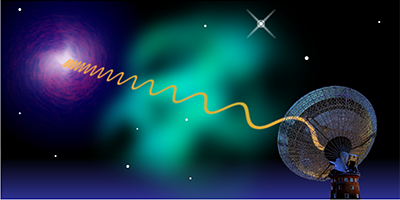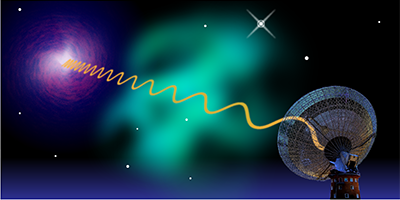Direct Test of Cosmic Acceleration
The consensus among cosmologists is that the Universe is accelerating, but this is inferred from a model of the expansion history and an unproven assumption about the uniformity of the Universe. Upcoming radio telescope surveys could offer a more direct observation of acceleration by tracking velocity changes in intergalactic hydrogen clouds, as described in Physical Review Letters. The authors outline a few modifications in data collection that are needed to achieve a sufficiently precise acceleration measurement.
The primary support for cosmic acceleration comes from supernova data. In 1998, astronomers detected that certain supernova are fainter—and therefore farther away from us—than expected. The implication is that the Universe is accelerating, rather than decelerating as normal gravitational interactions would predict. However, this conclusion assumes the validity of Einstein’s general relativity and that the Universe is homogeneous, in order to derive equations that relate distance to velocity and luminosity.
Hao-Ran Yu of the Beijing Normal University in China and his colleagues investigated the potential of using dense hydrogen clouds for a direct acceleration measurement. These clouds, which occupy the suburbs in between galaxies, are detected through their absorption of radio emission from a background quasar. Astronomers can measure the velocity of one of these clouds by observing the deviation, or redshift, of the hydrogen absorption line at 21 centimeters wavelength. Because the 21-centimeter line is narrow (compared to galaxy emission lines), it’s possible to observe very small velocity changes. Yu et al. argue that upcoming wide-sky radio surveys will measure the velocity of hundreds of thousands of hydrogen clouds. If these surveys made a few adaptions, like increasing their frequency resolution, they could measure—over the course of a decade—cosmically relevant accelerations of around 1 millimeter/second/year. – Michael Schirber





